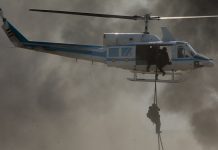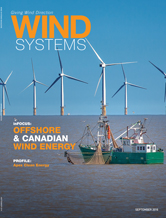While at my local automobile service shop waiting for my truck to be serviced, I drew some parallels between the well-established automotive industry and the up-and-coming wind industry — specifically about the lack of options for post-warranty, aftermarket support.
For example, at a repair shop, I have two options: Within the warranty period, the manufacturer requires a certified OEM shop for repairs, or I risk voiding the warranty coverage. After my warranty expires, I may choose to continue on with the OEM or find a non-OEM shop. If I trust the third-party mechanics and if they perform good quality work and, most importantly, if they have much more reasonable prices than the OEM shop, then I probably will leave the OEM. When I have to replace parts, I am aware the independent shop may have to purchase them from the manufacturer, but they also may suggest after-market parts that will save money or perform better. The American automotive industry is a good example of a matured industry that uses free-market solutions to help the owners succeed.
Now imagine if my truck had to be maintained only by the OEM or suffer a major degradation in performance and get cut off from industry expertise and spare-parts availability. Imagine the vehicle manufacturer refusing to work with any independent shops and making it so difficult for these shops to function that your vehicle couldn’t be fixed and would have to sit in the back lot, rusting. This would be an impossible situation for the owner and obviously would factor into future purchasing decisions as well as recommendations to colleagues, friends, and family. The latter situation is analogous to our burgeoning wind industry.
Many wind owners and operators are forced to find cheaper service and spare-parts solutions after the warranty period ends just to meet their operational expense (OPEX) budgets. These options might include a third-party independent service provider (ISP) or performing maintenance and repairs with their own crews. It’s at this crucial point that the OEMs need to have an aftermarket presence. Their expertise and experience are important in order for the owner to weather the storm of end-of-life problems that show up in 10 to 20 years.
Many of the OEMs have no turbines in the megawatt class old enough to benchmark the midlife and beyond. Both the owner and the OEMs are in uncharted territories when it comes to turbines 10 years old or older in the megawatt class. The OEMs are still beta testing their models on the owners and operators. However, when the owners may assume that their financial models are stable, they negate the uncertainty of these unproven machines.
It’s understood most OEMs want to not only sell a wind turbine, but also make another income from service and parts. This works nicely for the owners and operators who contract a “full-service agreement” over many years. This helps ensure OEM support in order to transfer the risk and stabilize the financial model. Many OEM companies and sub-suppliers will work with owners to develop strategic relationships early on, but in the later years, the profit margin is not there to support a full O&M contract by the OEM.
Owners can decide what they want to do with their assets post warranty (usually two to five years). Options include: hiring an ISP to maintain their assets, staying with the OEM on an “extended warranty,” or even self-performing with their own workers and back-office support. In order to be competitive, the independent power providers (IPP) will sell wholesale electrons below 2 cents/kWh on a spot market. These margins are slim, and many IPPs are struggling to make a profit at or above projections.
The wind industry as a whole is being driven to sell wholesale closer and closer to grid parity, or the average for conventional power plants. The future of wind as one of the cheapest sources of electricity also implies site operations must be one of the most efficient in power generation.
The pressure to make a profit is increasing as margins disappear. Add to that the fact most sites in the U.S. given a Production Tax Credit (PTC) from the government also will be facing a completely new OPEX budget after 10 years. OEMs and their sub-suppliers will need to adjust their businesses to support independent aftermarket efforts by the third-party suppliers, owners, and operators. This is imperative for the longevity and maturity of the wind industry.








































